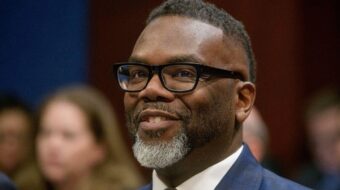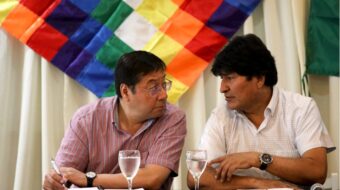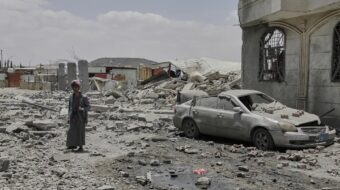
Afghanistan is increasingly in the spotlight, as the time approaches for the Obama administration to make public the results of its comprehensive review of strategic policy there.
Interviewed March 22 on CBS’ “60 Minutes,” President Obama defined his administration’s mission there as “making sure that al Qaida cannot attack the U.S. homeland and U.S. interests and our allies.” But he emphasized the approach must be diplomatic and economic as well as military: “So what we are looking for is a comprehensive strategy. And there’s got to be an exit strategy. There’s got to be a sense that this is not perpetual drift.”
The president earlier ordered an additional 17,000 U.S. troops to Afghanistan, to join the 38,000 U.S. and 30,000 NATO soldiers already there.
These developments are taking place amid growing opposition to troop increases in the U.S. and Afghanistan. A mid-March USA Today/Gallup poll found 40 percent of Americans saying sending U.S. troops to Afghanistan was a mistake in the first place — up from 30 percent earlier in the year. A January ABC News/BBC poll of Afghans in all 34 provinces found only 18 percent saying U.S. and NATO troops should be increased, and 44 percent calling for lower troop levels.
Asked what he would advise Obama, Foreign Policy in Focus analyst Conn Hallinan replied, “The worst thing he can do is to send more forces.” Hallinan traced the current crisis to NATO’s 2005 surge, and the outrage house raids, bombings and use of helicopter gunships kindled among local villagers.
“In 2005 there was virtually no insurgency” in [southern Afghanistan’s] Helmand Province, and there were fewer than 2,000 NATO troops,” he said. “Today 10,000 NATO troops are there and Helmand is arguably the most dangerous province in Afghanistan.”
Likening the situation to “a giant Rubik’s cube,” Hallinan said solving the puzzle requires fitting many complex elements together, and must involve all the country’s neighbors.
An immediate opening, he said, is a Taliban peace proposal recently delivered to the U.S. via Saudi Arabia.
“The Obama administration has made a couple of good moves,” Hallinan said. One, he said, is sending only 17,000 new troops instead of 40,000 as earlier contemplated, and the other is to draw Iran into the process.
He said the danger of counterinsurgency tactics was shown by the March 22 raid in which U.S. and Afghan troops said they killed five suspected militants and detained four others, but the district mayor said the raid instead targeted his house, killing two of his guards, a cook, a driver and another man.
Last year Afghan civilian casualties soared by 40 percent to more than 2,100.
“The first thing I would tell the president is that he needs to withdraw all U.S. troops from Afghanistan and arrange for the U.S. to work with the United Nations to bring in a transitional peacekeeping force that is armed only for protection; all bombings, detentions and shootings must cease immediately,” said Sonali Kolhatkar, co-author of “Bleeding Afghanistan” and co-director of the Afghan Women’s Mission, a U.S.-based non-profit funding health, education and training projects for Afghan women.
“I would also recommend that he pour the same amount of money that went into the military, into rebuilding infrastructure, with Afghan-led efforts to build schools and hospitals, and literacy projects for women as well as vocational training that can hopefully help the Afghans move away from the opium and poppy trade.”
Kolhatkar also urged support for Afghan-led efforts to hold the “war criminal” warlords now in Parliament accountable, adding that surveys have shown Afghan people favor creating a war crimes tribunal.
“Once these men are out of the Parliament, then real democracy can flourish,” she said. “And that’s the only thing that’s going to bring real peace.”
Meanwhile, national organizations are ramping up their pressure on the Obama administration to change course. Saying there is “one campaign promise Barack Obama must break: his commitment to increase troop levels in Afghanistan,” United for Peace and Justice points out in its fact sheet, “Escalation: Bad for them, bad for us,” that even military think tanks like the Rand Corporation “agree that political, local law enforcement and peacekeeping solutions are a more effective alternative to increases in foreign military force.”
mbechtel@pww.org









